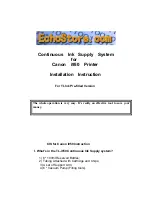
Eaton Power Xpert 9395 UPS Installation and Operation Manual 164201725—Rev 15
15
C
Chhaapptteerr 33 U
UP
PS
S IInnssttaallllaattiioonn P
Pllaann aanndd U
Unnppaacckkiinngg
Use the following basic sequence of steps to install the UPS:
1.
Create an installation plan for the UPS system (Chapter 3).
2.
Prepare your site for the UPS system (Chapter 3).
3.
Inspect and unpack the UPS cabinet (Chapter 3).
4.
Unload and install the UPS cabinet, and wire the system (
).
5.
Install features, accessories, or options, as applicable (
Installing Options and Accessories
6.
Complete the Installation Checklist (
).
7.
Have authorized service personnel perform preliminary operational checks and start up the system.
NOTE
Startup and operational checks must be performed by an authorized Eaton Customer
Service Engineer, or the warranty terms become void (see Section
). This
service is offered as part of the sales contract for the UPS system. Contact an Eaton
service representative in advance (usually a two-week notice is required) to reserve a
preferred startup date.
33..11
C
Crreeaattiinngg aann IInnssttaallllaattiioonn P
Pllaann
Before installing the UPS system, read and understand how this manual applies to the system being installed.
Use the procedures and illustrations in paragraph
and
to create a logical plan for installing the system.
33..22
P
Prreeppaarriinngg tthhee S
Siittee
For the UPS system to operate at peak efficiency, the installation site should meet the environmental
parameters outlined in this manual. If the UPS is to be operated at an altitude higher than 1000m (3000 ft),
contact an Eaton service representative for important information about high altitude operation. The operating
environment must meet the weight, clearance, and environmental requirements specified.
33..22..11
G
Geenneerraall S
Sttoorraaggee R
Reeqquuiirreem
meennttss ffoorr U
UP
PS
S EEqquuiippm
meenntt
•
Equipment which cannot be immediately installed and energized should be stored in an indoor, dry, clean,
ventilated area, heated environment (i.e. an temperature and humidity controlled environment). The
storage area must be protected from rain, water, chemical agents and gases as shown in
•
Do not store in areas where conditions such as dampness, changes in temperature, dust, dirt, rubble,
paint, conductive particulates, or corrosive atmosphere / gases are present.
•
Storage temperature: -25 °C to +60 °C (-13 °F to 140 °F).
•
Factory installed packaging and wrapping of the equipment should not be removed until equipment is
ready to install.
•
Equipment should be checked periodically for any signs of deterioration. It is the responsibility of the
receiving contractor to ensure protection during storage.
•
Equipment should be placed on true and solid level surfaces for storage.
•
Have a plan for condensation and environmental mitigation prior to equipment arrival.
Summary of Contents for Power Xpert 9395
Page 8: ......
Page 269: ...16420172515 164201725 15 ...
















































